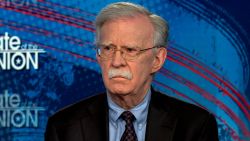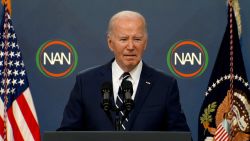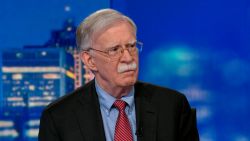President Joe Biden delivered the first prime-time address of his term on Thursday night, lamenting the devastation caused by Covid-19 over the past year and touting his plans to help the country recover.
Biden’s speech, which ran for just shy of 24 minutes, did not include a large number of fact-checkable assertions. But here is a breakdown of some of the checkable claims he did make:
The early reaction to the virus
In the opening moments of his speech, Biden said, “A year ago we were hit with a virus that was met with silence and spread unchecked. Denials for days, weeks, then months. That led to more deaths, more infections, more stress, and more loneliness.”
Facts First: Biden didn’t say who he was talking about here. If these remarks were intended as a shot at former President Donald Trump and his administration, Biden was correct about “denials” – Trump spent months downplaying the severity of the pandemic – but Biden was exaggerating about “silence.” Trump himself and Trump-era government officials were speaking publicly about the virus, and taking at least some action to combat it, as of January 2020.
In late January 2020, the White House announced a coronavirus task force, declared a public health emergency, and imposed travel restrictions on China. Trump spoke of the threat of the virus at a campaign rally in late January 2020 and in his State of the Union address in early February 2020.
The Centers for Disease Control and Prevention provided January updates about the virus.
Biden could have accurately said that many of Trump’s early remarks about the virus were dismissive, perfunctory or inaccurate; Trump repeatedly declared, into March 2020, that the out-of-control situation was under control. But it’s not true that Trump wasn’t talking about the virus at all, and certainly not true that the government as a whole wasn’t talking about it.
US vaccinations
Biden touted the number of people vaccinated in the US during his speech noting that the country is “on track to reach this goal of 100 million shots in arms on my 60th day in office.”
“No other country in the world has done this. None,” Biden added.
Facts First: It’s true that no country has vaccinated more total people than the US, though it’s worth noting that there are some smaller countries that have vaccinated a larger share of their total population. So far, the US has administered vaccines to more than 95 million people, a higher number than any other country in the world. However, 14 countries including Chile, Israel and the United Kingdom have vaccinated more people per capita. It should be noted that these countries have much smaller populations.
Vaccinations for 65 and older
“When I took office 50 days ago, only 8% of Americans – after months – only 8% of those over the age of 65 had gotten their first vaccination,” Biden said. “Today that number is 65%.”
Facts First: This is misleading and needs context. In the US, the first person received a vaccination dose outside of a clinical trial on December 14 and Biden took office on January 20 – so the vaccine was not available for “months” beforehand as the President implied, though that may have been a reference to the length of the pandemic.
As for Biden’s claim that 65% of Americans over the age of 65 having received their first shot, it’s unclear if Biden was citing different data, but according to data from the CDC, as of Thursday 62.4% of those 65 and older had received at least one does of the vaccine, not 65%.
Previously, as the Associated Press reported, an adviser on the administration’s virus task force had incorrectly claimed on Wednesday that 60% of this age group had been fully vaccinated, whereas Biden correctly noted that this number only refers to those who have received at least one dose.
Vaccine Supply
Describing his administration’s efforts to respond to the pandemic, Biden claimed, “Two months ago, this country didn’t have nearly enough vaccine supply to vaccinate all or even near all of the American public. But soon we will.”
Facts First: This needs context and depends on how the vaccine supply is being defined. If vaccine supply is measured by doses ordered or under contract, then that amount exceeded the US population prior to Biden’s inauguration. But if it consists of the amount of doses distributed, then the vaccine supply two months ago was not enough to vaccinate all of the American public.
As of January 2021, “[u]pdates from DOD officials and company representatives indicate there are at least one billion vaccine doses under contract,” according to a report from the Government Accountability Office. This includes 100 million doses each for the three vaccines currently authorized in the US: Moderna, Pfizer and Johnson & Johnson. However, as of January 20, only around 36 million vaccine doses had been distributed and were available to be administered. According to the CDC, as of March 11, 131,131,470 vaccine doses have been delivered, which is more than when Biden took office two months ago but only enough for about 40% of the US population or a little more than half the amount of all American adults to receive one dose.
Covid-19 deaths
According to the Centers for Disease Control and Prevention, as of March 11, 527,726 Americans have died from Covid-19. Biden claimed “[t]hat’s more deaths than in World War I, World War II, the Vietnam War and 9/11 combined.”
Facts First: This is misleading. If Biden had said that there have been more American Covid-19 deaths than American battlefield casualties from those wars, this would have been true. But it’s incorrect that that there have been more American Covid-19 deaths than all kinds of deaths from those wars, including non-battlefield deaths.
A total of 53,402 Americans died in battle during WWI, 291,557 in WWII and 47,434 in the Vietnam War. Combined with the 2,977 people who died as a result of the 9/11 crashes, that’s a total of 395,370 deaths.
When non-battle deaths, including those from war-related disease, are added to the tally, the number of Americans who died as a result of those wars and 9/11 rises to 583,112. And with non-American war deaths factored in, the death totals far exceed the current American coronavirus death toll.
Child poverty
Biden said the new law “will cut child poverty in this country in half, according to the experts.”
Facts First: Biden was correct about the experts’ predictions, at least with regard to child poverty in 2021. Scholars at the Urban Institute think tank and Columbia University’s Center on Poverty and Social Policy separately estimated Thursday that certain key elements of the American Rescue Plan Act would reduce child poverty by more than half in 2021. It’s worth noting that the long-term impact of the law on child poverty is unclear, since the key anti-poverty provisions are currently scheduled to exist only for this year.
Other scholars told CNN in January that the Columbia scholars’ preliminary estimates on the impact of the law on poverty, which were similar to the final estimates they released on Thursday, made sense. Michael Strain, director of economic policy studies at the conservative American Enterprise Institute think tank, said in January: “The Biden plan has several provisions that would substantially increase the incomes of low-income households. You would expect this to have a significant impact on child poverty rates, and the estimates produced in this report are very reasonable.”
You can click here for a look at some of the most notable anti-poverty provisions of the new law, including a major temporary expansion of the child tax credit.
The response to Biden’s goal
Biden said, “When I came into office, you may recall, I set a goal that many of you said was kind of way over the top. I said I intended to get 100 million shots in people’s arms in my first 100 days in office.”
Facts First: Biden’s vague claim – that “many of you” said his goal was “kind of way over the top” – is, at least, a more defensible assertion than his inaccurate January assertion that “you all said” his goal was “not possible.” It’s worth noting, though, that much of the media coverage of Biden’s goal quoted experts who said the goal was achievable, although ambitious.
We don’t know who Biden was talking about when he referred to the “many of you” who doubted his goal, but some of the media coverage did indeed convey doubts. CNN reported in January that state officials were skeptical that Biden could meet the goal. A Politico article in January cited concerns from members of Biden’s own team about their ability to meet the goal. A USA Today article called it a “lofty goal” and an “ambitious timeline.”




















